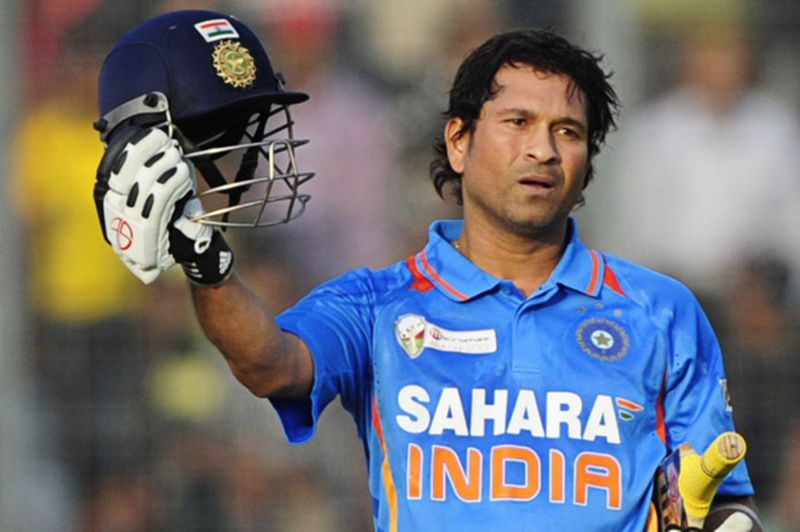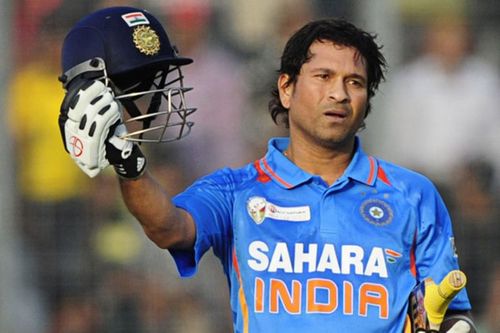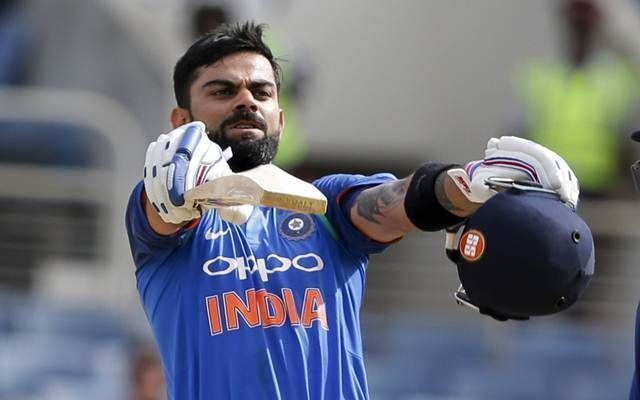
Why Virat Kohli is a bigger match-winner than Sachin Tendulkar

Sachin Tendulkar is the heartthrob of millions of Indians. A man whom Indians can proudly associate themselves with. He is a genius who first burst onto the international scene as a tender 16-year-old child prodigy way back in 1989.
And when he made his debut, the Berlin Wall was still in place, the Indian economy had not yet opened up, the rupee was just 17 to a dollar, satellite television had not yet penetrated fully into Indian households.
Through 24 glorious years on the field, the whole of India saw him grow from a teen sensation, to a batting superstar, to a global cricketing icon and a cultural touchstone.
Sachin became synonymous with the sport itself.
No sportsperson in the history of Indian sport has managed to captivate, enthrall, bewitch and capture his place in the hearts of so many people and stay relevant for such a long period of time like Tendulkar.
When you watch Sachin bat, he manages to create a sense of awe, a unique sense of veneration, inaccessible to the lesser mortals of Indian cricket.
Do you remember cricket in the 1990s? How many of us continued to watch the match after Sachin was dismissed?
Do we remember the days when we used to skip school and wake up at odd hours just to watch him in action?
The days when we used to tell our friends with a sense of pride, “I want to become like Sachin.”
Do we remember the moments when our mouths unconsciously opened in awe when Tendulkar scored that Test hundred at Perth as a tender 18-year-old? That rebellion at Auckland -82 off just 49 balls - 'Oh My God!' Has anyone captivated us like how Sachin did on that day?
That Desert Storm at Sharjah when Shane Warne and company were smashed to a pulp in 1998? That magical 241 at Sydney when Tendulkar refused to play even a single drive through the off side?
That ethereal 163 at Christchurch, that iconic 200* at Gwalior against South Africa. And finally, on the 16th of November 2013, when we all saw Tendulkar deliver that 20-minute speech with our eyes moist and throats choked?
But then, haven’t I missed out on some moments? What about his 136 against Pakistan in January 1999? What about that 175 he hit against Australia in 2009? Why have I missed those moments?
Ok then, let us travel 19 years back in time to that Test match against Pakistan in 1999.
Pakistan boasted some of the best bowlers in the world - Wasim Akram, Waqar Younis, Saqlain Mushtaq etc. India need 271 to win the match, and at 6/2, in walks Tendulkar.
He bats as if he is a man possessed and sends all of us into a trance. Gaps are born, the demons in the pitch vanish, and Tendulkar scores a brilliant hundred.
Things were just starting to get a little bit easy…
Then, with just 17 needed for victory, disaster strikes….
Saqlain Mushtaq tosses the ball up, Tendulkar goes for the expansive drive, mistimes the ball, and it lands in the hands of Wasim Akram. And as Sachin departs, the hopes evaporate as well.
Pakistan go on to win the match by 12 runs. How many of us were heartbroken on that day? What would have happened if Sachin had stayed on for one more over? Why did he have to play that shot?
Move forward to 2009 to that ODI against Australia. Tendulkar is now 36. He has outlived all his peers and has completed 20 years in International cricket.
Australia bat first and post a mammoth 350/4, and in reply once again, Sachin’s genius shines through.
Hilfenhaus is driven with finesse over cover, Bollinger is cut and pulled to the boundary, Hauritz and Voges are deposited into the stands.
Tendulkar has once again bewitched us. He has created a mirage - time is nothing more than an illusion now, and he scores an ethereal hundred.
India now require 19 off 18 balls. Clint McKay has the ball in his hand. A victory for India! Surely! Tendulkar is still there batting on 175.
But, disaster strikes once again…..
McKay bowls a slower ball, the master goes for the paddle over fine leg, the ball takes the top edge and lands in the hands of short fine leg. Tendulkar walks back after illuminating the night sky at Hyderabad. And once again, as Tendulkar departs, the hopes vanish, and India lose the match by 3 runs.
And once again, the same questions come and haunt you. What if Tendulkar had stayed on for one more over? Why did he have to play that shot?
Let us pause here for now, and move on to a different setting….

The year is 2012, the venue is Hobart. India are taking on Sri Lanka in the CB Series, and in order to stay alive in the tournament, India have to chase down the Sri Lankan total inside 40 overs.
The Lankans score a huge 320, and India in reply are 86/2 after 9.2 overs.
And in walks a 23-year-old man responding to the name of Virat Kohli who just pulverizes the Sri Lankans.
Kulasekara is driven to the fence with grace, Mathews is cut and pulled to the boundary. The best treatment of the day is reserved for the Sri Lankan pace spearhead - Lasith Malinga. Kohli just pummels Malinga, rips him apart, stays till the end, and enables India to reach the target in just 36.4 overs.
What if Kohli had not stayed till the end? Could India have chased the target inside 40 overs?
Now, let us move to the year 2016. India are taking on Australia in the ICC World T20. They will have to chase down a tricky target of 161 in 20 overs to stay alive in the tournament.
Kohli walks in with the score at 23/1, and acts as a fulcrum, allowing the other batsmen to bat around him. They come and go, but Kohli stands firm, holding the innings together.
Then, as the asking rate climbs up to over 10, Kohli goes on the rampage….
No Aussie bowler is spared. Hazlewood is smacked to all parts, Coulter Nile disappears to the boundary, Faulkner and Maxwell vanish into the crowd, and Kohli stays till the end, as India beat Australia by 6 wickets with 5 balls to spare.
Now, what if Kohli had departed with India still needing more than 30 runs from the last 3 overs? Could India have won the match?
Now, let us come to the heart of this column - What is the difference between Kohli and Tendulkar?
Tendulkar was a master craftsman, a man who adapted to the situation at hand extremely well, but somewhere along the journey, allowed the situation to dictate his next move.
But Kohli is different. He is a fighter, a man with a ‘never say die’ attitude. Kohli does not bow down to the situation, he bends it to suit his next move, and he has that critical killer punch that Tendulkar did not possess.
And that is exactly why if you ask who the most complete batsman of all time is, the answer is Tendulkar. Who made me gape at him in awe? The answer is Tendulkar.
But if you ask me who I prefer to have in my team in a must-win situation, then, my answer to that will be Kohli.